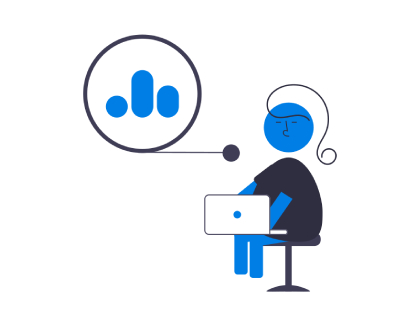What Is Conversational AI in HR?
Conversational AI is a technology that allows machines to understand, interpret, and respond to human language in a way that feels natural and easy to interact with. In HR, it typically takes the form of an AI conversational chatbot or AI chatting bot, a virtual assistant that interacts with users through text or voice. These bots are often embedded into HR software, career sites, employee portals, or internal messaging platforms.
The primary role of conversational AI in HR is to simulate meaningful, contextual conversations. Whether it's a job applicant asking about interview rounds or an employee inquiring about leave policies, a conversational chatbot can respond instantly with accurate information. This not only reduces waiting times but also provides consistent answers regardless of time zones or working hours.
What sets conversational AI apart from regular automation is its ability to understand intent, learn from past interactions, and respond in a human-like tone. It is powered by natural language processing (NLP) and machine learning, making it capable of interpreting complex queries and refining responses over time.
When integrated properly, conversational AI becomes a digital HR assistant, one that never sleeps, never tires, and always responds politely.
How Does Conversational AI Improve Hiring and Recruitment?
Hiring is a high-volume, time-sensitive process that often requires frequent communication. Conversational AI has a transformative impact on recruitment by streamlining this interaction between recruiters and candidates. Here's how it works across different stages of the hiring cycle:
1. Instant Screening and Shortlisting
Instead of recruiters manually reviewing every resume or scheduling a screening call, an AI chatbot can ask key qualifying questions such as years of experience, skills, notice period, and preferred job location. Based on the candidate's responses, the bot can instantly identify whether the applicant is a potential fit and direct qualified profiles to the recruiter's dashboard.
This significantly reduces the time spent on initial screening and ensures that only relevant candidates move forward in the process.
2. Interview Scheduling and Coordination
Organizing interviews can take up a lot of time, particularly when there are several stakeholders involved. A conversational chatbot can handle the logistics by syncing with calendars, offering available time slots to candidates, and sending reminders before the interview.
This automated flow eliminates the back-and-forth emails that often delay scheduling and frees up the recruiter's time for more strategic tasks.
3. Enhancing Candidate Experience
Today's candidates expect real-time updates and fast responses. Conversational AI enables 24/7 interaction, allowing applicants to ask questions about the role, the selection process, company culture, or timelines even outside working hours. This continuous engagement not only improves candidate satisfaction but also helps employers build a strong employer brand.
4. Consistency and Compliance
A major advantage of conversational AI is consistency. Every candidate receives the same set of pre-screening questions and information, ensuring fairness and compliance with recruitment standards. The chatbot can also be programmed to align its communication with organizational policies and industry regulations.
Can Conversational AI Reduce HR Workload and Boost Efficiency?
Yes, conversational AI really boosts productivity for HR teams. By handling high-volume, repetitive queries, it liberates HR professionals from routine tasks and allows them to focus on more impactful areas like strategic planning, employee development, and policy innovation.
Here are some areas where conversational AI delivers real efficiency:
1. Responding to Employee Queries
One of the most common tasks for HR teams is responding to employee questions about leave balance, salary deductions, holiday lists, reimbursement policies, and performance cycles. With a conversational chatbot in place, these queries can be answered in real time without requiring human intervention.
Employees can simply type or speak their question and receive an accurate, prompt response, improving satisfaction and reducing follow-up tickets.
2. Automating Onboarding Processes
When a new employee joins, there are multiple steps involved in submitting documents, understanding policies, filling out forms, and attending inductions. An AI conversational chatbot can guide new hires through this process in an interactive manner. It can provide instructions, send reminders, and track task completion, all while maintaining a friendly and engaging tone.
This creates a seamless onboarding process, cuts down on paperwork, and makes sure that no steps are overlooked.
3. Managing Surveys and Feedback Collection
Conducting employee surveys or gathering feedback on policies can be time-intensive. Conversational AI can distribute these surveys in chat format, making them feel less like forms and more like casual conversations. As a result, participation rates are higher and responses are more honest.
HR can then utilize the data to make well-informed choices about enhancing the workplace environment and procedures.
4. Ensuring Policy Awareness
A chatbot can be programmed to send timely policy reminders or compliance updates. For example, it can notify employees when appraisal submissions are due or remind them to complete mandatory training sessions. This proactive communication ensures that employees stay aligned with organizational policies without HR needing to send manual reminders.
What are the practical applications of conversational AI in human resources?
Conversational AI is now a well-established development rather than just a new trend. Many organizations across industries are actively using it to enhance HR service delivery. Below are some common real-world applications:
1. Recruitment Assistant
AI chatbots are embedded into career pages to interact with potential applicants. They answer questions about job roles, help candidates find relevant openings, and even collect resumes all through a simple chat interface.
2. Employee Helpdesk
Instead of waiting for an HR manager to reply, employees can talk to a virtual assistant to get quick answers to their usual questions. Whether it's clarifying tax deductions or understanding the promotion policy, the chatbot delivers consistent information at any time of day.
3. Onboarding Concierge
New employees can ask the bot about login credentials, system setup, meeting schedules, or induction plans. This ensures that their initial days are smooth and they don't feel lost in a new environment.
4. Leave and Attendance Support
Chatbots integrated with leave and attendance systems allow employees to apply for leave, check balances, or view attendance records without logging into a separate platform.
5. Benefits and Claims Guidance
Employees often find policies around health insurance, travel reimbursements, or provident funds confusing. A conversational chatbot can offer step-by-step guidance and even initiate claims, making the entire process user-friendly.
6. Wellness Monitoring
Some chatbots are equipped with sentiment analysis capabilities. They can detect signs of burnout or stress based on how employees communicate and can suggest wellness resources or alert HR for intervention.
Is Conversational AI the Future of Employee Engagement?
In a workplace where employee expectations are rising, especially around transparency and responsiveness, conversational AI has the potential to become the cornerstone of employee engagement strategies.
Here's why:
1. Personalized Communication
Conversational AI can tailor responses based on user data, location, department, or role. This ensures that each interaction feels relevant and meaningful, fostering a sense of connection.
2. Continuous Engagement
Instead of waiting for annual surveys or feedback forms, chatbots can initiate ongoing conversations, pulse checks, or short quizzes to assess mood and engagement levels throughout the year.
3. Accessibility and Inclusivity
Conversational bots can be multilingual and available across platforms: web, mobile, email, or messaging apps. This inclusivity ensures that every employee, regardless of background or location, can access support and information easily.
4. Real-Time Feedback Loops
Employees can raise concerns, report issues, or offer suggestions via the chatbot interface. This encourages an open feedback culture and helps HR address problems before they escalate.
5. Trust and Transparency
When employees receive prompt, accurate, and polite responses to their queries, it fosters trust in the organization. A responsive HR chatbot becomes a symbol of the company's commitment to employee well-being.
In essence, conversational AI moves HR from being reactive to proactive, creating a workplace where communication is seamless, expectations are managed, and engagement is nurtured consistently.
Conclusion
As HR functions continue to evolve, conversational AI is no longer a luxury; it is fast becoming a necessity. Whether it's enhancing recruitment, simplifying onboarding, or boosting employee engagement, conversational AI offers immense value by making communication efficient, personal, and scalable.
The future of HR is not about replacing humans; it's about empowering them with intelligent tools. And conversational AI is leading this transformation, one conversation at a time.
Ready to unlock the power of conversational AI in your HR processes? Discover how Qandle's AI-driven HR platform can help your organization automate support, streamline hiring, and elevate engagement. Get in touch with our team today for a personalized demo.


 Back to Glossary
Back to Glossary